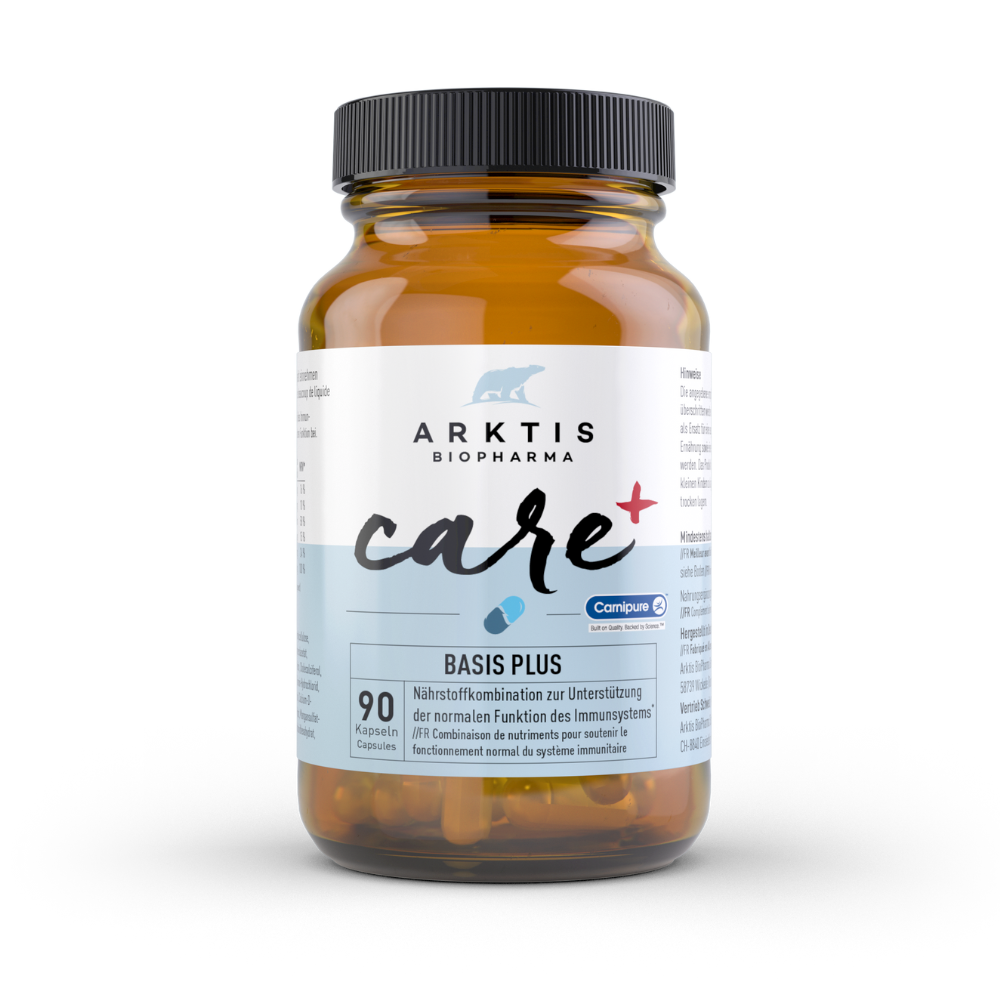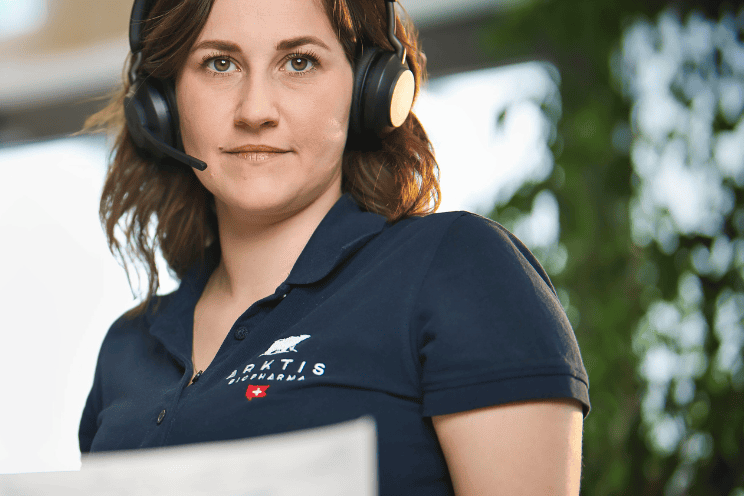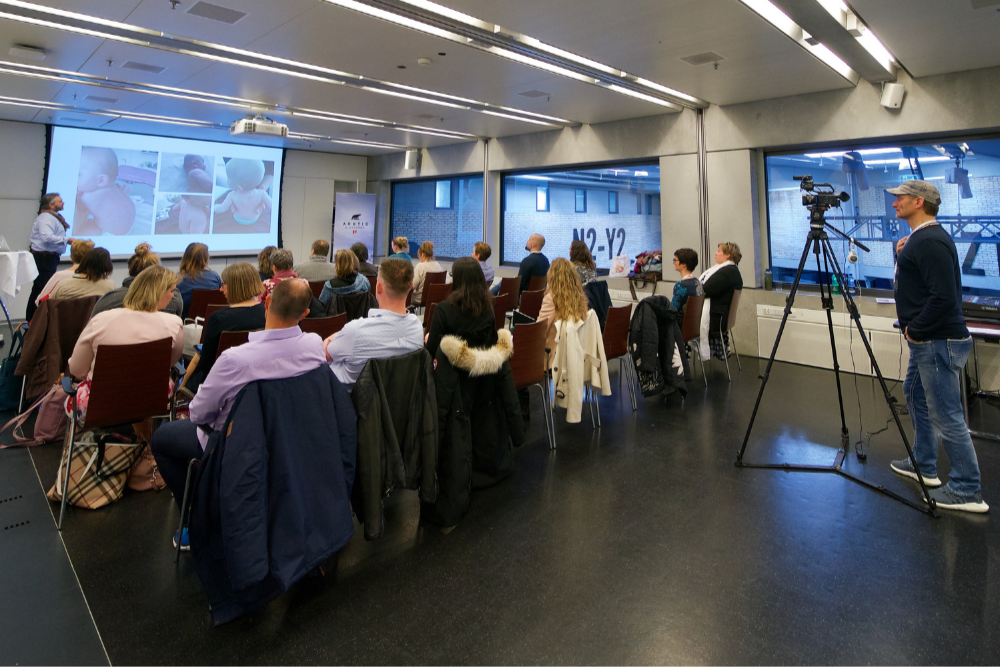[g_podcast id="14720459"]
In this episode, I talk to sports scientist and founder of the nutrition platform Upfit, Till Ebener. We talk about:
This episode is aboutabout the topic of sport and the motivation to do sport. My first question to Till is how he got into sport and what he does now.
Till tells me that as a child, he not only had a natural urge to move like all children, but was also hyperactive. School is the first place where a child's urge to move is drastically restricted. He is grateful to his parents for enrolling him in a sports club. This made him realize early on what a significant mental impact sport can have. It gives clarity, improves thought processes and makes you feel good. Till believes he was destined to stay active.
He had become curious: What does exercise do? What are the mechanisms? Which types of sport do what? So he studied sport and is now not only a qualified sports scientist, but has also been a personal trainer for 10 years and has been running the"Upfit"platform for four years now, whose aim is to teach sport and the background to it.
In my experience, weight management is one of the strongest motivations to exercise. I ask Till what other benefits exercise offers.
Tillmentions chronic degenerative diseases such as type 2 diabetes, cardiovascular diseases, diseases of the bone and cartilage system, cognitive processes, focus, concentration and therefore also performance at work and general well-being.Studies have shown that sport triggersthe release of neurotransmitters such as serotonin and dopamine in the brain, which make you feel good.
He can understand that some people find it difficult to start exercising if exercise has never been part of their everyday life or has not been for a long time. However, he experiences with many clients that exercise can very quickly become a new habit and they feel better. Then they suddenly realize that they are missing something if theyno exercise. You can only get to this point withregularity. All beginnings are difficult. The body is very adaptable - in every direction. If exercise is not part of life, it gets used to it. If it becomes part of everyday life, it quickly gets used to it and enjoys it in the long term.
I ask Till if he would recommend "forcing yourself a bit" at the beginning.
In his experience, planning isessential. People have a tendency to want something but not want to do anything about it - which of course doesn't work.The variance is 80 percent. This means that although many people have the desire to change something, only 20 percent put this desire into action. This is known as the "intention-behavior gap". The probability of implementation is significantly increased by planning ahead.You can get help from internet forums, friends or a trainer. This creates a routine. In this way,exercise becomes second nature and is no longer questioned at some point.
It is very important to start relaxed. You may have to force yourself a little at the beginning, but it helps if you involve other people.
There is a huge range of sports on offer. Many people ask themselves: Where do I start? Which sport is the best? Should I go jogging? Should I go to the fitness center? Strength training is important, but I can't train indoors; I have to go outsidessoutside. Or should I do yoga? There are so many different options. My question to Till is how to go about it.
Till emphasizes that this is an important point, especially for people who want to do sport in the long term. Some people do a challenge for a month and thendon't do anything after that.Butyou canreallybenefit data-contrast="auto"> only if youdo sport in the long term.That's whyyou need to find out: What do Ienjoy in the long term? What motivates me? Studies show that sticking with it is a decisive factor, so it has to befun. Patrick Meinhardt says he often meets parents whoare annoyed that children play tennis for a month, thenfootball for a monthand then something else for another month. It takes a variety of movement experiences to find out what you like doing.
In general, it is important to incorporate both strength training and mobility training. These two aspects are effective in the long term and form the basis for a healthy life. They are the best way to protect the muscular and skeletal system. In this way,the condition of the bodycan bepositively changed ina controlled manner withoutexternalinfluences.
Many people have a narrow view of strength training and think of gyms and monotonous movements on machines. However, strength training has many facets. There are routinesthat take placecompletelyoutside.There are ways and means of strength training without additional weights.Youuse your ownbody weight, as incallisthenics. This is good for beginners. Or you can move creatively. There is the "Movement Culture","Animal Movements".That may sound strange.You copythe movements of animals and imitate them. Then you realize that it 's quite strenuous.Orstretching strength, a mixture of strength and flexibility exercisesthatare also suitablefor beginners. There are v manyoptions for strength training.
Where do you start?
Tillrecommends making a list of sports thatyoufind interesting, either because you like watching them on TV or because you find it exciting when others talk about them. You then check off this list.
There is now also a good network. Platforms like the Urban Sports Club give you the opportunity to try out lots of different sports without having to commit to a 24-month contract. Youcan try out everything, and youshould.
In my opinion, it's very important to do sport properly so that it doesn't harm you. I often hear this from my clients:"I started jogging, but now my knees hurt." You have to look: How do I do it right? Just starting out. You can certainly jog the right way and the wrong way, wear the right shoes and the wrong shoes. Perhaps over-motivation can also put too much strain on the body so that it backfires.
Till calls what I'm describing the "New Year phenomenon". There are sayings like"Nobody starts in 5th gear." This also applies to sport. When you learn a new language, you don't immediately write a book in it, but start with individual words. It's the same with sport. Beginners in particular easily overestimate their performance level. The motto is to feel your way slowly, especially with sports that put a lot of strain on the joints, such as running. This puts a lot of strain on the joints, which runs through the entire joint system. In the beginning, you should alternate walking and running,"running without panting". It's best not to focus on running, but onbeingoutside, experiencing nature, listening to the birdsong, instead of constantlylooking at your watch and checking your pulse. I now movefor the pure experience of it, not to achieve a goal.
Tillknows, of course, that losing weight is a strong motivation for exercise. I want to reach a certain weight in a certain amount of time. Diet is the primarymethod for achieving a calorie deficit. If Iexerciseregularly, it has abig impact, butexercise should only be a supplement and support. It stimulates the metabolism, burns more energy and builds muscle, but is only an additional influence.
I have often read and believe myself that diet is more important for successful weight loss than exercise. It's 80 percent diet and only 20 percent exercise. I ask Till what he says about this.
Till saysthat"the best possible results are achieved with 100 percent nutrition, 100 percent training and 100 percent recovery sleep". Many people set themselves excessive goals. Till recommends setting a long-term goal such as a healthy life and a healthy weight. That's what we all want. Getting there is nota sprint, but a marathon, and nutrition is the first factor to consider. It should be healthy and avoid intolerances. We need to listen to our bodies and find out: What is healthy for us? Till says that my topic - gut health - is also an extremely important factor. You have to know what is healthy for your intestinal flora. If you get rid of water retention, it feels good. That's how you reach your goal, not by rushing around: one more month until the wedding ...
I ask whether exercise definitely helps with weight loss.
Till answers with an absolute yes. He adds that people whoexerciseregularlyare much more likely to follow a diet that is conducive to losing weight. There are studies on this. People are also invested:"I'm doing sport now. Then my diet has to be right too, otherwise it won't do me any good."
For me it was very important to address the opposite problem problem:What if you're too thin? I often have clients who havebowel problems come to me with bowel problems and who don't want to lose any more weight want to.That's what happens w henhen you change your diet from lots of carbohydratesto just a fewcarbohydrates. Many people who are very slim can eat what they want.Others find that enviable, abut they are not that lucky.These people often suffer from it, being so thin and not being able to put on weight. My experience is thatthey often eat a lot of sugar, a lot of fast carbohydratescarbohydrates,so that they at least not lose too much weight.In the gut-friendlydiet that I recommend, we leave out the sugar, eat more vegetables, good proteinssse, good fats.Very slim people are thenfearthey couldlose weight. I lose water at the beginning, especially whenIhave previously eaten pro-inflammatory before.This means I lose weight on the scales.I ask Till wwhat I can do to a) not lose too much weight and b)put on weight?
Till explains that around 70 percent of people have an increased feeling of hunger while they are exercising or shortly afterwards. It also depends on the intensity. The body gives you the feeling that you need more energy, so you eat more.
He agrees with me that people should eliminate simple sugars or reduce them as much as possible. For many people, reducing carbohydrates makes perfect sense. In Till's experience, there are two things that prevent people from gaining weight:One is whether you are a good or bad food metabolizer. The other - probably more important - is the feeling of hunger. This is genetically determined and has a strong influence. One says:"I would like to put on weight and eat until I burst, but I'm not putting on weight." The other says:"I hardly eat anything, why am I gaining weight?" If you look at his food log,he eats 3,500 kcal/day. The one who says:"Ieat all day",on the other hand, only eats 1,800 kcal/day.There are hugediscrepancies between perception and reality.This cannot be resolved. The feeling is there.
In Till's experience, eating liquid food helps him to gain weight. Although Till would generally favor solid food because it stimulates certain processes in the body, for example through chewing. In this particular case, however, you can make a shake with a relatively high caloriecontent without carbohydrates, usingprotein and fat-rich foods such as avocado. Since there is no chewing and you drink the meal, the body perceives it differently, so you can consume more calories without feeling full again.
I always say: gaining weight doesn't just mean increasing the kilos on the scales. For healthy weight gain, you don't want tofat fat, but rather muscle.
Till has observed that these very slim people often have a poor diet because of the low calorie intake they naturally have and are then"skinny-fattypes".This means that they are very thin but have a high body fat percentage. As with obesity, this is a strong risk factor for various diseases. Slim is not always healthy. You have to look at other parameters, such as body fat compared to muscle mass.
This is why the training factor is so important.Exercise is useful and helpful becauseit has an influence on insulin sensitivity, for example. After every workout, you have a window of approx. 18 hours in which insulin sensitivity - i.e. the processing of carbohydrates in the body - works much better. For people who have a problem with this, it therefore makes sense to do volume-oriented strength training.
You can only build muscle if you exercise. You can't just take a proteinssshake and think you'll put on weight.
Till says that would be great. He believes that people have been looking for this miracle pill for centuries.He once compiled an overview of the things that havebeen advertised over the decades, such as abdominal belts orEMS devices that youput on your stomach while lying on the couch.
You have to realize that exercise iscompletely natural, that effort is natural. The body is happy about it, especially in stressful situations.It wants to be stressed. Naturalness is lost in fitness studios, which many people perceive asconfinement. Tillrecommendsbroadening your perspective.What about traditional strength training? Maybe gymnastics? Athletics? Swimming? Training with free weights, where you have to master your body and coordination, is also an option thatis more exciting than machine training, which was actually invented tominimizethe risk of injury.Till says he prefers people to start slowly with training that is reallyfun andthat they can keep going for longer, rather than focusing solely on the risk of injury.
I then ask how sensible it is to do this on your own.I'm more inclined to recommend a trainer so that you learn it properly.
Till replies that both a trainer and a community or club are a good thing. He regrets that clubs are dying out because they are really good data-contrast="auto">. For lone runners, Till recommends one of the many apps with good training programs for beginners. You can also read books, as there are many that deal with the subject. The only problem is that the overabundance of books and apps can quickly become overwhelming. It is therefore helpful to ask someone who knows the subject for recommendations. You can also manage the training program on your own. However, it is the more difficult way. The social support from the group or the trainer is a motivation to stick with it that should not be underestimated.
To summarize: the combination of diet, exercise and recovery is important - which many people forget. It's important to have a plan. I would like to know what Till and his team at "Upfit" have to offer.
Till explains that"Upfit" was born in early 2016 from the idea of offering help to people who find it difficultto plan their diet. Specifically, "Upfit" offers this recipe, these macro and micronutrients, individually for everyone, so that you are perfectly catered for, tailored to you personally. That was the basic idea.
Over the years,it has developed into a platform on which the team tries to cover more and more different topics: sport, mental aspects, psychological aspects. The focus is always on nutrition and losing weight. People who want to lose weight and need a concrete plan to make progress are the main customers of"Upfit".As Till explained at the beginning,planningis extremely important in order to turn a wish into reality. If"Upfit" works out the plan and all you have to do is pick it up, it is of course easier."Upfit" has the know-how and the science behind it, and is backed upwithTill'sexperience fromdecades of coaching.
Till has also recently started a podcast, in whichhehas already interviewedme.Till and his team are always trying to grow and offer more opportunities to get information.
Till has said that the nutrition plans at"Upfit" are individual. I'm interested to know whether you can even say that you can't tolerate something or perhaps have a histamine intolerance.
Till confirms that this is possible and that this is exactly what"Upfit"is all about . Not only can you specify intolerances, but you can evenexclude foodsthat you don't like.
You can change your diet. If you say you want to go vegetarian, vegan or paleo, you can dothat.The plan istailored to your currentheight, age, weight, muscle mass or body fat percentage and then to your goal.This means that if you say you want to lose 5 kg, then the plan is designed so that you should lose 5 kg over the planning period.There's a whole section of success stories ontheUpfitwebsitewhere people talk about how it worked for them.
Till once had "Upfit" user Hannes as a guest on the podcast. Hannes hadlost 20 kg withUpfit plansand is now over the moon. Heis now trying to eat veganforfunbecause"Upfit" so well liked,even though he has already achieved his goal.
More on the subject of individuality. You can also choose: How often do I cook? Do I cook ahead for the next day? Do I cook for another person? What is my budget? How much cooking time do I have?"Upfit" reallytries to cover everything. Ifusers stillhave ideasand say:"Hey, that function would be great", then"Upfit"has an optionin the app towrite tothe team. They thentry to implement it if possible.Till says that they havealready receivedlots of cool ideas from usersin this way, which have then made the product even better.
I ask how"Upfit" integrates sport and whether they offer support.
Till reports that"Upfit" also has online training plans.For example, there is a plan for muscle building -even at home without equipment - andrunning plans, not just for beginners butalso for people who want to develop their skills."Upfit" has training videos where you can train along.These are still relatively new, but the team is working on developingthem further expand.
For"Upfit" , it goes without sayingthatif you get a nutrition plan, you must also have the option of getting a training plan that corresponds to your goal.If you enter your valueswhen registeringand say "0-5 times a week for exercise"when asked about activity,Upfit says:"Try to exercise1-2 times or 2-3times a week." The team hasincluded small reminders to motivateusers.
That isthe mission of"Upfit". The team puts its heart and soul into it. Recently,there has also been a service telephone where you can call if you have any difficulties.Till and his colleaguesare doing their best.
And there are no more excuses!Finally, I ask Till what advice he would like to give my listeners.
Till says:"I'd be delighted if you took the podcast as a little challenge and motivation toexerciseregularlyor perhaps try out new things in exercise. You are in very good hands with Julia when it comes to keeping your gut healthy. If you bring that together, you have a really good chance of getting on the right track."
I would like to thank Till for the wonderful and very informative conversation.
The links to the episode are:
Website: www.upfit.de
further sports offer: https://urbansportsclub.com/de
Upfit Podcast: https://upfit.de/podcast/
Now I recommend you subscribe to the podcast so you don't miss an episode, and if you like what you hear, I really appreciate a review on iTunes or Apple Podcast. Because these reviews also help other people find the podcast so we can spread the knowledge about gut and health more.




In this episode, I talk to sports scientist and founder of the nutrition platform Upfit, Till Ebener. We talk about:
- How to find the motivation to exercise regularly
- How to seek support
- What role nutrition plays in losing weight
- How to gain weight if you are too thin
- What the Upfit platform offers
This episode is aboutabout the topic of sport and the motivation to do sport. My first question to Till is how he got into sport and what he does now.
Till tells me that as a child, he not only had a natural urge to move like all children, but was also hyperactive. School is the first place where a child's urge to move is drastically restricted. He is grateful to his parents for enrolling him in a sports club. This made him realize early on what a significant mental impact sport can have. It gives clarity, improves thought processes and makes you feel good. Till believes he was destined to stay active.
He had become curious: What does exercise do? What are the mechanisms? Which types of sport do what? So he studied sport and is now not only a qualified sports scientist, but has also been a personal trainer for 10 years and has been running the"Upfit"platform for four years now, whose aim is to teach sport and the background to it.
Motivation to exercise regularlyssexercise
In my experience, weight management is one of the strongest motivations to exercise. I ask Till what other benefits exercise offers.
Tillmentions chronic degenerative diseases such as type 2 diabetes, cardiovascular diseases, diseases of the bone and cartilage system, cognitive processes, focus, concentration and therefore also performance at work and general well-being.Studies have shown that sport triggersthe release of neurotransmitters such as serotonin and dopamine in the brain, which make you feel good.
He can understand that some people find it difficult to start exercising if exercise has never been part of their everyday life or has not been for a long time. However, he experiences with many clients that exercise can very quickly become a new habit and they feel better. Then they suddenly realize that they are missing something if theyno exercise. You can only get to this point withregularity. All beginnings are difficult. The body is very adaptable - in every direction. If exercise is not part of life, it gets used to it. If it becomes part of everyday life, it quickly gets used to it and enjoys it in the long term.
I ask Till if he would recommend "forcing yourself a bit" at the beginning.
In his experience, planning isessential. People have a tendency to want something but not want to do anything about it - which of course doesn't work.The variance is 80 percent. This means that although many people have the desire to change something, only 20 percent put this desire into action. This is known as the "intention-behavior gap". The probability of implementation is significantly increased by planning ahead.You can get help from internet forums, friends or a trainer. This creates a routine. In this way,exercise becomes second nature and is no longer questioned at some point.
It is very important to start relaxed. You may have to force yourself a little at the beginning, but it helps if you involve other people.
How do you find the sport that suits you?
There is a huge range of sports on offer. Many people ask themselves: Where do I start? Which sport is the best? Should I go jogging? Should I go to the fitness center? Strength training is important, but I can't train indoors; I have to go outsidessoutside. Or should I do yoga? There are so many different options. My question to Till is how to go about it.
Till emphasizes that this is an important point, especially for people who want to do sport in the long term. Some people do a challenge for a month and thendon't do anything after that.Butyou canreallybenefit
In general, it is important to incorporate both strength training and mobility training. These two aspects are effective in the long term and form the basis for a healthy life. They are the best way to protect the muscular and skeletal system. In this way,the condition of the bodycan bepositively changed ina controlled manner withoutexternalinfluences.
Many people have a narrow view of strength training and think of gyms and monotonous movements on machines. However, strength training has many facets. There are routinesthat take placecompletelyoutside.There are ways and means of strength training without additional weights.Youuse your ownbody weight, as incallisthenics. This is good for beginners. Or you can move creatively. There is the "Movement Culture","Animal Movements".That may sound strange.You copythe movements of animals and imitate them. Then you realize that it 's quite strenuous.Orstretching strength, a mixture of strength and flexibility exercisesthatare also suitablefor beginners. There are v manyoptions for strength training.
Where do you start?
Tillrecommends making a list of sports thatyoufind interesting, either because you like watching them on TV or because you find it exciting when others talk about them. You then check off this list.
There is now also a good network. Platforms like the Urban Sports Club give you the opportunity to try out lots of different sports without having to commit to a 24-month contract. Youcan try out everything, and youshould.
Safety in sport
In my opinion, it's very important to do sport properly so that it doesn't harm you. I often hear this from my clients:"I started jogging, but now my knees hurt." You have to look: How do I do it right? Just starting out. You can certainly jog the right way and the wrong way, wear the right shoes and the wrong shoes. Perhaps over-motivation can also put too much strain on the body so that it backfires.
Till calls what I'm describing the "New Year phenomenon". There are sayings like"Nobody starts in 5th gear." This also applies to sport. When you learn a new language, you don't immediately write a book in it, but start with individual words. It's the same with sport. Beginners in particular easily overestimate their performance level. The motto is to feel your way slowly, especially with sports that put a lot of strain on the joints, such as running. This puts a lot of strain on the joints, which runs through the entire joint system. In the beginning, you should alternate walking and running,"running without panting". It's best not to focus on running, but onbeingoutside, experiencing nature, listening to the birdsong, instead of constantlylooking at your watch and checking your pulse. I now movefor the pure experience of it, not to achieve a goal.
Does sport help you lose weight?
Tillknows, of course, that losing weight is a strong motivation for exercise. I want to reach a certain weight in a certain amount of time. Diet is the primarymethod for achieving a calorie deficit. If Iexerciseregularly, it has abig impact, butexercise should only be a supplement and support. It stimulates the metabolism, burns more energy and builds muscle, but is only an additional influence.
I have often read and believe myself that diet is more important for successful weight loss than exercise. It's 80 percent diet and only 20 percent exercise. I ask Till what he says about this.
Till saysthat"the best possible results are achieved with 100 percent nutrition, 100 percent training and 100 percent recovery sleep". Many people set themselves excessive goals. Till recommends setting a long-term goal such as a healthy life and a healthy weight. That's what we all want. Getting there is nota sprint, but a marathon, and nutrition is the first factor to consider. It should be healthy and avoid intolerances. We need to listen to our bodies and find out: What is healthy for us? Till says that my topic - gut health - is also an extremely important factor. You have to know what is healthy for your intestinal flora. If you get rid of water retention, it feels good. That's how you reach your goal, not by rushing around: one more month until the wedding ...
I ask whether exercise definitely helps with weight loss.
Till answers with an absolute yes. He adds that people whoexerciseregularlyare much more likely to follow a diet that is conducive to losing weight. There are studies on this. People are also invested:"I'm doing sport now. Then my diet has to be right too, otherwise it won't do me any good."
How can you gain weight if you are too thin?
For me it was very important to address the opposite problem problem:What if you're too thin? I often have clients who havebowel problems come to me with bowel problems and who don't want to lose any more weight want to.That's what happens w henhen you change your diet from lots of carbohydratesto just a fewcarbohydrates. Many people who are very slim can eat what they want.Others find that enviable, abut they are not that lucky.These people often suffer from it, being so thin and not being able to put on weight. My experience is thatthey often eat a lot of sugar, a lot of fast carbohydratescarbohydrates,so that they at least not lose too much weight.In the gut-friendlydiet that I recommend, we leave out the sugar, eat more vegetables, good proteinssse, good fats.Very slim people are thenfearthey couldlose weight. I lose water at the beginning, especially whenIhave previously eaten pro-inflammatory before.This means I lose weight on the scales.I ask Till wwhat I can do to a) not lose too much weight and b)put on weight?
Till explains that around 70 percent of people have an increased feeling of hunger while they are exercising or shortly afterwards. It also depends on the intensity. The body gives you the feeling that you need more energy, so you eat more.
He agrees with me that people should eliminate simple sugars or reduce them as much as possible. For many people, reducing carbohydrates makes perfect sense. In Till's experience, there are two things that prevent people from gaining weight:One is whether you are a good or bad food metabolizer. The other - probably more important - is the feeling of hunger. This is genetically determined and has a strong influence. One says:"I would like to put on weight and eat until I burst, but I'm not putting on weight." The other says:"I hardly eat anything, why am I gaining weight?" If you look at his food log,he eats 3,500 kcal/day. The one who says:"Ieat all day",on the other hand, only eats 1,800 kcal/day.There are hugediscrepancies between perception and reality.This cannot be resolved. The feeling is there.
In Till's experience, eating liquid food helps him to gain weight. Although Till would generally favor solid food because it stimulates certain processes in the body, for example through chewing. In this particular case, however, you can make a shake with a relatively high caloriecontent without carbohydrates, usingprotein and fat-rich foods such as avocado. Since there is no chewing and you drink the meal, the body perceives it differently, so you can consume more calories without feeling full again.
I always say: gaining weight doesn't just mean increasing the kilos on the scales. For healthy weight gain, you don't want tofat fat, but rather muscle.
Till has observed that these very slim people often have a poor diet because of the low calorie intake they naturally have and are then"skinny-fattypes".This means that they are very thin but have a high body fat percentage. As with obesity, this is a strong risk factor for various diseases. Slim is not always healthy. You have to look at other parameters, such as body fat compared to muscle mass.
This is why the training factor is so important.Exercise is useful and helpful becauseit has an influence on insulin sensitivity, for example. After every workout, you have a window of approx. 18 hours in which insulin sensitivity - i.e. the processing of carbohydrates in the body - works much better. For people who have a problem with this, it therefore makes sense to do volume-oriented strength training.
We are made for movement
You can only build muscle if you exercise. You can't just take a proteinssshake and think you'll put on weight.
Till says that would be great. He believes that people have been looking for this miracle pill for centuries.He once compiled an overview of the things that havebeen advertised over the decades, such as abdominal belts orEMS devices that youput on your stomach while lying on the couch.
You have to realize that exercise iscompletely natural, that effort is natural. The body is happy about it, especially in stressful situations.It wants to be stressed. Naturalness is lost in fitness studios, which many people perceive asconfinement. Tillrecommendsbroadening your perspective.What about traditional strength training? Maybe gymnastics? Athletics? Swimming? Training with free weights, where you have to master your body and coordination, is also an option thatis more exciting than machine training, which was actually invented tominimizethe risk of injury.Till says he prefers people to start slowly with training that is reallyfun andthat they can keep going for longer, rather than focusing solely on the risk of injury.
I then ask how sensible it is to do this on your own.I'm more inclined to recommend a trainer so that you learn it properly.
Till replies that both a trainer and a community or club are a good thing. He regrets that clubs are dying out because they are really good
To summarize: the combination of diet, exercise and recovery is important - which many people forget. It's important to have a plan. I would like to know what Till and his team at "Upfit" have to offer.
Upfit - Healthy eating made easy
Till explains that"Upfit" was born in early 2016 from the idea of offering help to people who find it difficultto plan their diet. Specifically, "Upfit" offers this recipe, these macro and micronutrients, individually for everyone, so that you are perfectly catered for, tailored to you personally. That was the basic idea.
Over the years,it has developed into a platform on which the team tries to cover more and more different topics: sport, mental aspects, psychological aspects. The focus is always on nutrition and losing weight. People who want to lose weight and need a concrete plan to make progress are the main customers of"Upfit".As Till explained at the beginning,planningis extremely important in order to turn a wish into reality. If"Upfit" works out the plan and all you have to do is pick it up, it is of course easier."Upfit" has the know-how and the science behind it, and is backed upwithTill'sexperience fromdecades of coaching.
Till has also recently started a podcast, in whichhehas already interviewedme.Till and his team are always trying to grow and offer more opportunities to get information.
Till has said that the nutrition plans at"Upfit" are individual. I'm interested to know whether you can even say that you can't tolerate something or perhaps have a histamine intolerance.
Till confirms that this is possible and that this is exactly what"Upfit"is all about . Not only can you specify intolerances, but you can evenexclude foodsthat you don't like.
You can change your diet. If you say you want to go vegetarian, vegan or paleo, you can dothat.The plan istailored to your currentheight, age, weight, muscle mass or body fat percentage and then to your goal.This means that if you say you want to lose 5 kg, then the plan is designed so that you should lose 5 kg over the planning period.There's a whole section of success stories ontheUpfitwebsitewhere people talk about how it worked for them.
Till once had "Upfit" user Hannes as a guest on the podcast. Hannes hadlost 20 kg withUpfit plansand is now over the moon. Heis now trying to eat veganforfunbecause"Upfit" so well liked,even though he has already achieved his goal.
More on the subject of individuality. You can also choose: How often do I cook? Do I cook ahead for the next day? Do I cook for another person? What is my budget? How much cooking time do I have?"Upfit" reallytries to cover everything. Ifusers stillhave ideasand say:"Hey, that function would be great", then"Upfit"has an optionin the app towrite tothe team. They thentry to implement it if possible.Till says that they havealready receivedlots of cool ideas from usersin this way, which have then made the product even better.
Sport with"Upfit"
I ask how"Upfit" integrates sport and whether they offer support.
Till reports that"Upfit" also has online training plans.For example, there is a plan for muscle building -even at home without equipment - andrunning plans, not just for beginners butalso for people who want to develop their skills."Upfit" has training videos where you can train along.These are still relatively new, but the team is working on developingthem further expand.
For"Upfit" , it goes without sayingthatif you get a nutrition plan, you must also have the option of getting a training plan that corresponds to your goal.If you enter your valueswhen registeringand say "0-5 times a week for exercise"when asked about activity,Upfit says:"Try to exercise1-2 times or 2-3times a week." The team hasincluded small reminders to motivateusers.
That isthe mission of"Upfit". The team puts its heart and soul into it. Recently,there has also been a service telephone where you can call if you have any difficulties.Till and his colleaguesare doing their best.
And there are no more excuses!Finally, I ask Till what advice he would like to give my listeners.
Till says:"I'd be delighted if you took the podcast as a little challenge and motivation toexerciseregularlyor perhaps try out new things in exercise. You are in very good hands with Julia when it comes to keeping your gut healthy. If you bring that together, you have a really good chance of getting on the right track."
I would like to thank Till for the wonderful and very informative conversation.
The links to the episode are:
Website: www.upfit.de
further sports offer: https://urbansportsclub.com/de
Upfit Podcast: https://upfit.de/podcast/
Now I recommend you subscribe to the podcast so you don't miss an episode, and if you like what you hear, I really appreciate a review on iTunes or Apple Podcast. Because these reviews also help other people find the podcast so we can spread the knowledge about gut and health more.

















